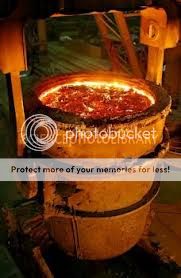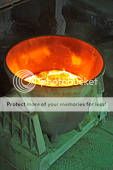eots
no fly list
I'm not sure where this line of discussion is headed, honestly. Are you saying that there was molten steel at the site? Are you saying that multiple witnesses say they saw molten steel? Are you saying that those witnesses would have known the difference between molten steel and molten aluminum?
Was the existence of molten metal ignored in the NIST report? I can see that being the case. However, it does not follow that it must have been ignored for nefarious reasons. It could be that, since the fires would not have burned hot enough to melt steel, it was simply assumed the metal was aluminum and therefore unimportant to the investigation. I wonder what the conversation around the quote you gave from John Gross was? It seems at least possible that he was saying that he challenged the premise of molten steel, but would accept the premise of molten aluminum. I can't know from the small quote.
Anyway, at this point there seems to be minor discrepancies at most. Certainly nothing seems totally wrong, either intentionally or accidentally, in the NIST report, from the information in this thread.
It seems that NIST did not follow due diligence in following up on these reports, statements from witnesses, Tulley was hired to do the cleanup, are we to suppose his people would not know molten metal/steel with their own eyes?
Again we have these statements, from seemingly credible people, and the point is that NIST ignored it.
We had preliminary reports of "melted steel" it should have been followed up by NIST
and it wasn't. It wasn't mentioned in the report, only to dismiss it.
We should be looking at this with unbiased views and try not to stretch it into anything further.
Was there reports of molten steel/metal? Yes. Did NIST follow up on this as should have been expected? No.
Besides, WTC 7 experienced the same thing, and it was not hit by a plane, so I think we can rule aluminum out of the equation.
It is reasonable for people to come to the conclusion at the time, that the molten material under the piles of wreckage were a residual effect of whatever caused the towers to fall.
Something burned hot enough and long enough for witnesses to make these kinds of statements.
Shall we move on to the testing NIST did to better understand if these temps were possible?
I just quickly wanted to comment about this. It has been posted in this thread that there was a large amount of aluminum used in the buildings themselves. daws posted a link that claimed the exterior panels used aluminum. This could easily have been the case for building 7 as well, not to mention the possibility of furniture and equipment within the buildings being made of metal with a low melting point.
I also have no idea if someone should be able to tell molten aluminum or other metals from molten steel based solely on visual examination, especially considering the amount of other materials floating around which could have mixed with the molten metal.
you have no experice with metal if you can not tell molten steel from molten aluminum

